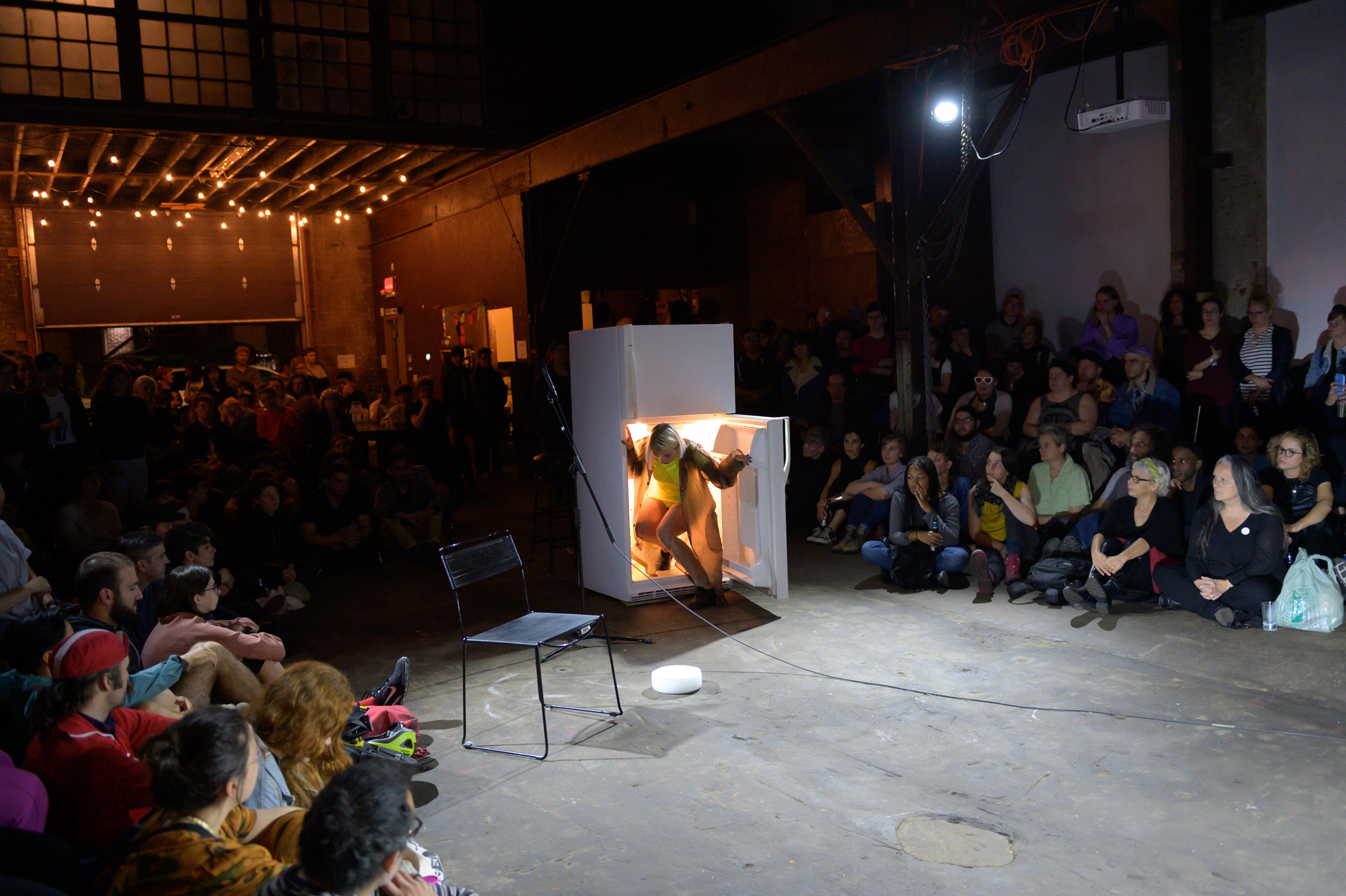“It’s a series of actions, really simple actions, focusing on the body,” said Emma-Kate Guimond about her performance at VIVA! Art Action, a bi-annual ‘vibrant’ action-based performance art, social practice, and public intervention festival.
Before she begins, she warms up the topography of her body with a series of simple movements and stretches, like jumping jacks or simply standing on two feet, to become aware of her skin, her muscles…
With a BFA in contemporary dance from Concordia, Guimond chose to pursue visual and performing arts in her postgraduate studies, focusing on presence (or the lack of it) in body-based exercises. She refers to the acts she performs as “trueisms,” actions that aren’t mundane, nor are they exciting. They simply have no punchline, no trick. Allowing decentralization to happen and refusing to be present during her performance, defining limits based on absolute “no’s.”
Guimond completed her MFA at UQAM with a project called Possible Performance. A script of actions at heart, Guimond wrote in the second person, addressing different types of impossibility – “you try to jump, but you also try not to jump”, “you hold the slab,” a giant silicone sculpture, “as long as you can.” She wrote about 30 of these and invited others to come to her studio to perform them.
“It was based on the economy of friendship,” she said. “A collective negotiation of how they could be in the space. I think the most intimate way of showing somebody a performance is by having them do it themselves.”
With open individual sessions lasting for approximately 45 minutes, her final footage of the performance was six hours long. Her participants wore specific textured clothing, colour-blocked and vintage costumes selected by Guimond to resonate with her installation. She became fixed on the idea that, no matter how close you can get to someone, you can never become them, never know the inner workings of their minds. Her participants became scripted versions of herself – avatars.
“There’s a threshold there, of togetherness and aloneness,” Guimond explained. “One of the tags of my thesis was ‘Rehearsing being alone together,’ this idea of things being side by side but not necessarily integrated. It’s how I structure my performances.”
Guimond’s newer work, not entirely separate from her thesis project, breaks down these ideas into categories, rules to continue structuring her work.
“I adopted a dog in December and in dog training, they introduce this approach called the 3-Ds, distraction, distance and duration. I thought it was a really interesting structure for thinking about performance. Distraction is something I have worked on in my thesis, talking about decentralising attention within a performative space and at the same time, not having a protagonist, not having a hero and not having one thing happening at once, no focal point or narrative,” said the artist.
“The best way to get over what we are going through as a society is to accelerate its process, a dangerous idea,” she continued. “Deceleration is this idea of anti-productivity. I kept thinking to myself, what is the performance I could do and keep going my whole life?”
Action-based performance can be quite chaotic; a series of things occur, a transformation happens that surprises the audience, but this isn’t what Guimond is putting forward. Her climaxless, ultimately pointless movements, are based on endurance, working with those ideas of duration, deceleration, distraction, and difficulty.
Difficulty is a thing that I work with a lot. Difficulty and possibility… the body having a hard time doing things…”
Whether clutching her ankles in a one-woman human triangle on top of a refrigerator or rolling stiffly and painfully slow across an uneven asphalt floor in a sculptor’s rented-out studio, Guimond’s performance art is surely strenuous, yet not impossible.
On Sept. 28, Guimond opened VIVA!’s final performance night of the Biennale with a projected video of her dog. “My dog for the duration of a cigarette,” said the artist into a microphone. She lit a cigarette, dropped it on the floor and removed her heeled oxford shoe, revealing a nude fishnet sock. Her foot blocked the smoke for a moment before stepping it out. “Tricks for the duration of a bone,” she continued, her actions intriguingly bizarre. “The pace required for the urine inside the plastic bottle to remain still as the bottle rolls.” Guimond wore a neon yellow dress and translucent, dirt-coloured raincoat. She removed a massive clump of neon yellow putty, slapped it to the floor and planked, pushing her face deep inside it. It’s form kept as she rose to her feet.–
To see documentation of Guimond’s past work, visit www.emmakateguimond.com .
With files from Emma-Kate Guimond and VIVA! Art Action. Feature photo by Paul Litherland.
